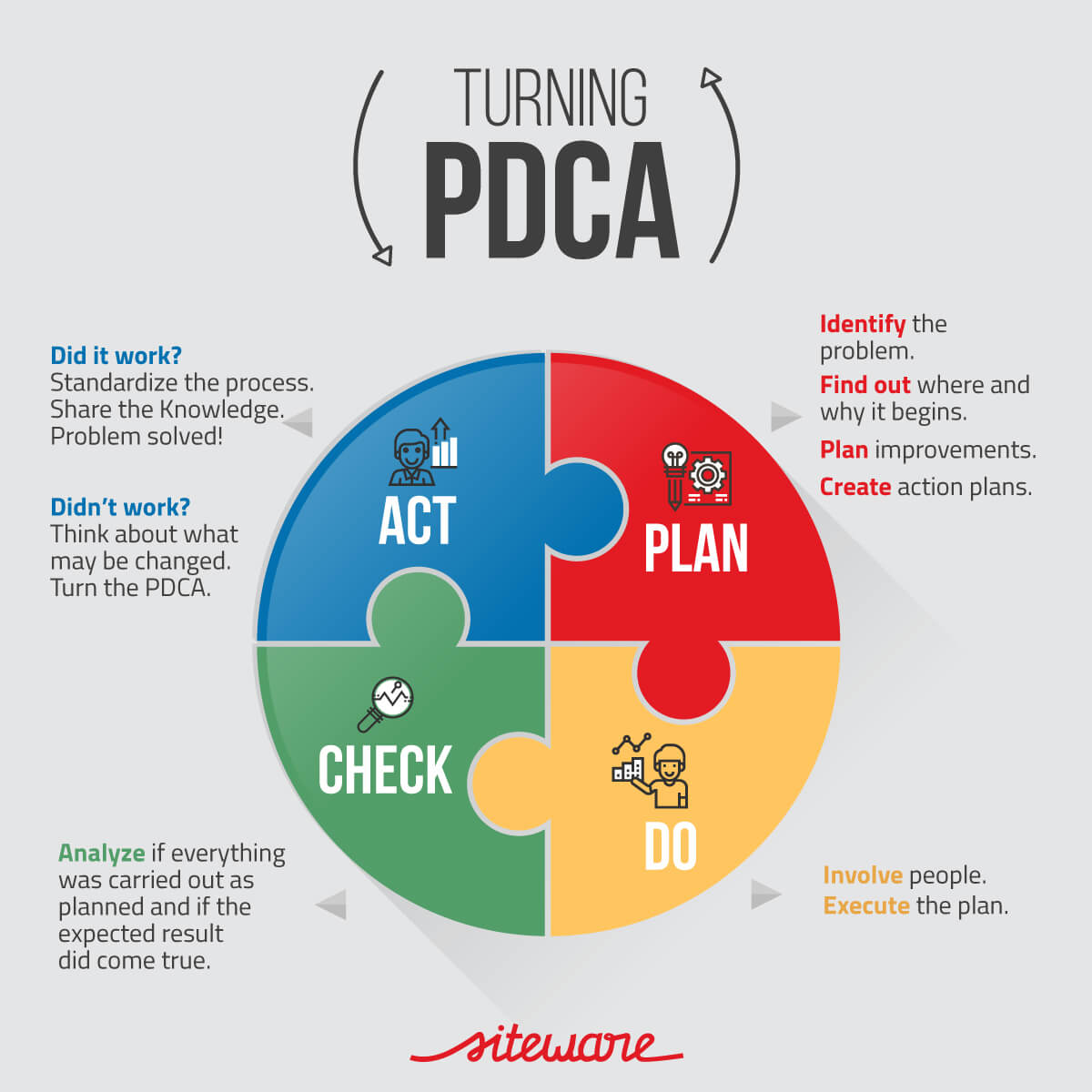Improve Your Management Immediately: Learn How to Do PDCA Step by Step

Conteúdo
The PDCA methodology is a tool designed to help in improving management, much like methodologies such as OKR and FCA. It works on the improvement of activities (such as projects and processes essential to the functioning of an organization) and in solving problems, large or small, that reach these activities.
You can find references to this methodology in the names Deming Cycle or Shewhart Cycle, the respective names of its creators.
But all these denominations refer to the same method, created in the 1920s, which consists of the basic :
- Plan;
- Do;
- Check;
- Act.
Want to know everything about the PDCA methodology and how it can be easily implemented in your organization to bring about improvements in your processes?
Keep reading the text and learn how to do PDCA!
Why use the PDCA Cycle?
As we have already said, the concept of the PDCA methodology helps in the development of process quality and is allied with solving problems.
The application of the tool is also recommended by the ISO 9001: 2015 group of technical standards that establish a model of quality management for organizations in general.
PDCA brings benefits such as:
- Acceleration and improvement of activities;
- Identification of problems and their root causes;
- Optimization of control guidelines;
- Integration of productive stages;
- Involvement of the team (managers and collaborators);
- Continuous process improvement.
To help you get started with your business, check out how to do PDCA step by step and start this evolution in your business processes as soon as possible.
How to do PDCA step by step?
1- P: Plan
In the first step of the cycle, you create a strategy that solves the problems previously encountered in activities.
For this, it is necessary to have a competent project team responsible for this analysis, which develops the plan according to a path that is feasible for the company.
In planning, you choose which people are better able to develop the cycle, as well as selecting which complementary methods will be used and which goals need focus at that time.
This way, you can identify problems, rank them, and create action plans to solve them in the best possible way.
2- D: Do
In the second step of the cycle, you execute the action plan that was created in the previous step. This part is crucial for the proper development of the methodology. Therefore, it should be done and analyzed carefully to avoid failures and increase the success of activities.
It is important that the Planning has been done in detail and with calmness so that there are no shortcomings in the rest of the process. ‘Do’ is the execution of the created plan, and it is also where the team is trained so that the method works.
It is important to note all the results (good or bad) and the date when they occurred, in addition to communicating and training the selected employees for the actions and their deadlines, and training techniques may be used. Without this, there is no way to do the PDCA methodology with the desired success.
3- C: Check
It is the step in which the team checks and analyzes what has been executed and the results obtained according to the action plan.
This analysis can also be developed during the whole cycle of the plan, since it is used to constantly check the work (if it is being executed correctly) and also for its results (the statistical verification of data, like failures and errors. )
It is important to check that what has been planned is already being implemented, in addition to comparing the results between the before and after and the development of the achievement of the proposed goal.
If the results of the check are not satisfactory, it is recommended to return to the Planning stage.
4- A: Act
This is the last step of the cycle, which consists in putting into practice the corrective actions of the problems. In the previous step (check), you will identify problems and faults that should be corrected in this step.
Those who really want to understand how to do PDCA step by step, you need to keep in mind that this is the time to standardize the process, share the learning with everyone involved, reflect on what can be changed and do the PDCA cycle again!
Conclusion
Now that you know how to do PDCA step by step, it is important to keep in mind that as soon as it ends, it must be restarted to ensure the continuous improvement of a company’s processes.
To take full advantage of the PDCA cycle, this process can be redone as many times as necessary, as its knowledge is cumulative.
Do not forget that the cycle is a continuous process! Its phases must be in constant development and should not be abandoned. Only in this way will process and activity improvements be cumulative and visible to all.
With Siteware’s STRATWs One solution you can execute your strategy and deepen your analysis through methodologies such as the PDCA. With STRATWs, you can conduct analysis and troubleshooting in a simple and interactive way.
In addition to the PDCA, our system relies on methodologies such as the FCA, the DMAIC Cycle, the View and Act and others.
Revolutionize the management of your company with STRATWs One

